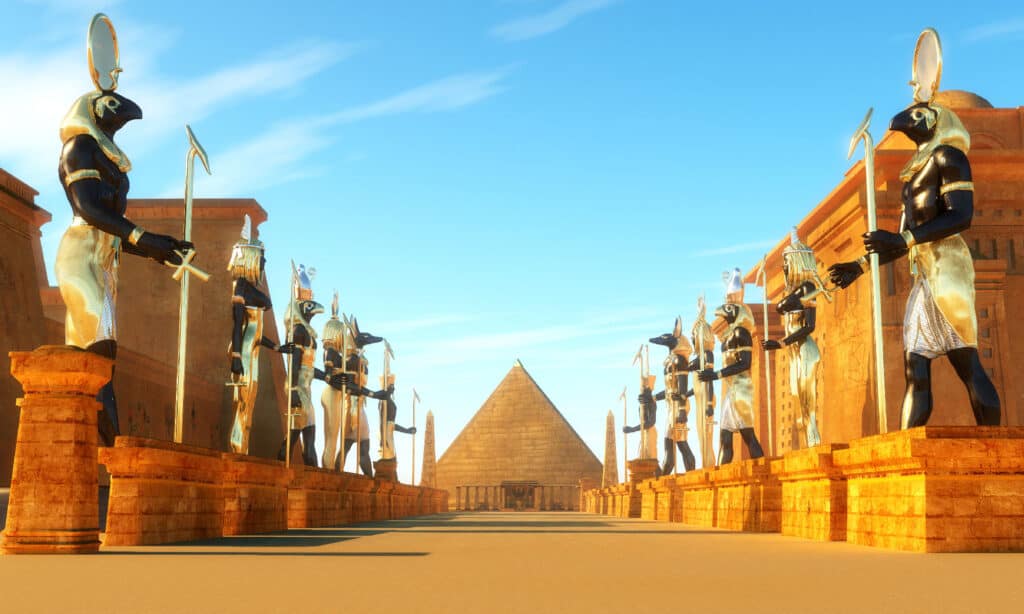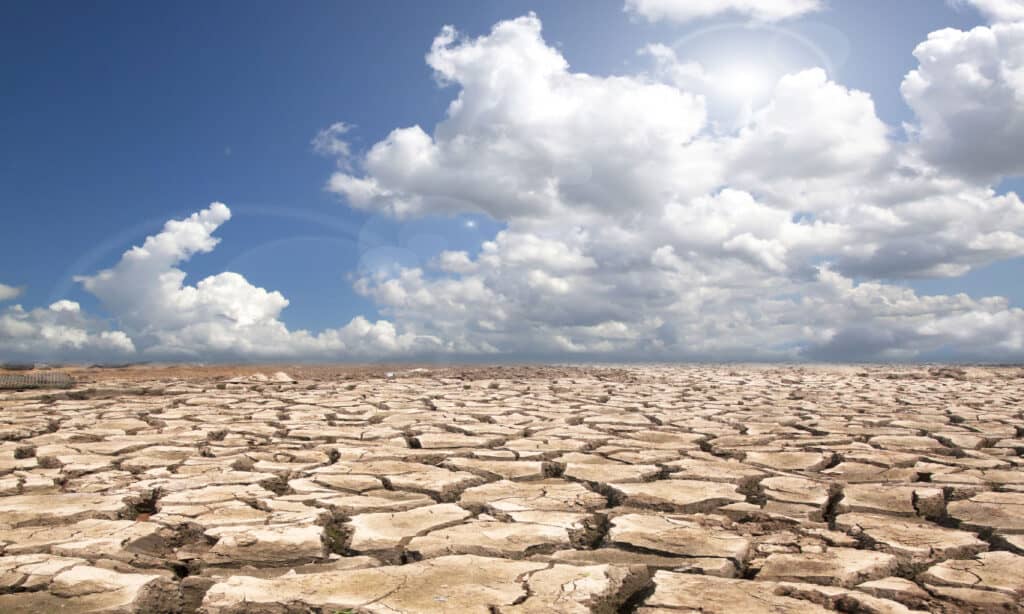Drought refers to low-level precipitation in a particular region for an extended period. This could be the absence of rain or snow in that region, leading to crop failure, drying up of water bodies, and low soil moisture. A little look back into history shows us that droughts have ravaged areas of the earth at different points, wreaking terrible havoc on life and livelihood.
This article discusses some of the worst droughts in human history and what happened after them. We also take the time to look at the most drought-prone nations in the world today.
The Worst Droughts in Human History
Worst Droughts in Human History: Drought in Ancient Egypt in 2200 B.C.

Ancient Egypt experienced a severe drought in 2200 B.C.
©iStock.com/CoreyFord
Sediments and other archaeological evidence have led scientists to believe that ancient Egypt experienced a severe drought. Ancient Egyptians depended on the Nile’s flooding to irrigate their crops, but there were intense crop failures when the Nile failed to flood for an extended period. The Pharaohs tried their best to mitigate this through various innovations, but eventually, it fell apart. The drought and its aftermath are believed to have led to the fall of the Egyptian empire.
The Aftermath of the Drought
The drought led to the fall of the old Egyptian empire as well as other civilizations like the Harappa and the Subir, which are present-day northwest India and Syria, respectively. According to archaeologists, the drought led to famine and the breakout of conflict and wars in the Egyptian empire that soon spiraled out of control and eventually led to the empire’s collapse.
Worst Droughts in Human History: The Dust Bowl Drought (1931-1939)

The worst drought that ever hit the United States is the Dust Bowl drought.
©NOAA George E. Marsh Album / CC0 1.0 – License
The Dust Bowl drought is usually referred to as the worst drought that ever hit the United States and the entirety of North America. The drought lasted about a decade, and it was characterized by severe dust storms that killed people and crops in the entire region. The Dust Bowl started in 1930 in the Southern Plains region of the United States, and massive dust storms began to hit in 1931. By 1934, about 35 million acres of land that farmers had previously cultivated had been rendered useless for farming. At the same time, about 125 million acres of land were losing their topsoil. For context, 125 million acres of land is about the size of Texas. The Dust Bowl ended in 1939 when regular rainfall returned to the region.
The Aftermath of the Drought
The drought may have ended after a decade, but the aftermath of the drought on the economy and the government were felt for much longer.
One of the immediate effects of the drought on the region was a massive migration from the area as people sought employment and sources of livelihood elsewhere. About 2.5 million people migrated away from the Dust Bowl states – New Mexico, Texas, Colorado, Oklahoma, Nebraska, and Kansas. Oklahoma alone lost about 440,000 people, many of whom moved to California. Unfortunately, these migrants were discriminated against and were given menial jobs for horrible wages. They were referred to as “Okies,” which soon became a discriminatory term for people who became refugees due to the Dust Bowl, irrespective of whether they were from Oklahoma or not.
The Dust Bowl also affected government policy as the national government established multiple laws to alleviate the plight of those severely affected by the drought and deal with the environmental degradation that led to the drought in the first place. Two policies focused on environmental degradation were the Soil Erosion Service and the Prairie States Forestry Project. These programs ensured that local farmers planted trees on farms across the Great Plains as windbreaks.
Finally, the Dust Bowl also inspired arts and culture. Musicians, novelists, and photographers all immortalized the plight and struggles that characterized that period with their works. A prominent example was the Novel titled “The Grapes of Wrath” by John Steinbeck, which captured the discrimination and sufferings of the Okies. Another example is Woody Guthrie’s first album titled “Dust Bowl Ballads.”
Worst Droughts in Human History: Drought in the Northern Great Plains (1987-1989)

The drought in the Northern Great Plains caused heatwaves and forest fires that were quite popular.
©Leaflet / Creative Commons – License
A drought broke out in the United States in the 1980s when low rainfall began to occur in the Northern Great Plains. The drought soon spread east and west, and at its peak, it was said to cover about 45% of the United States. The drought was characterized by dust storms that led to the closure of schools, amongst other things. The drought also caused heatwaves and forest fires that were quite popular. One prominent example was a fire that laid waste to about 1.2 million acres around the Yellowstone National Park. It may not have been as devastating as the Dust Bowl, but this drought was quickly one of the worst to hit America and the world.
The Aftermath of the Drought
The drought led to significant economic losses, with experts now placing the losses at around $39 million. There were also large-scale crop failures and the disruption of academic calendars for educational institutions.
What Countries Have the Most Droughts in the World Today?

©iStock.com/mesut zengin
Today, millions of people have to deal with droughts and their consequences worldwide. Some of the nations facing the most severe of consequences include:
Sudan
Over 2.3 million people in the nation are affected by droughts yearly. The nation is primarily a desert and depends mainly on the Nile for water.
Afghanistan
This is another nation that is extremely dry and barren. Reports state that whenever a drought occurs, about 60-80% of the animals in Afghanistan die from it. The droughts have affected about 2.5 million people in the nation.
Eritrea
Multiple experts have listed Eritrea as one of the most drought-prone nations in the world. The nation is also bedevilled by food shortages that have exposed about 1.3 million people to starvation, migration issues, child malnutrition that affects half of its children population, and political instability.
The photo featured at the top of this post is © NOAA George E. Marsh Album / CC0 1.0 – License / Original
Thank you for reading! Have some feedback for us? Contact the AZ Animals editorial team.






